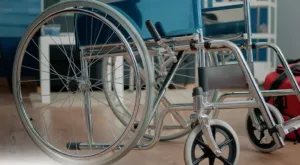
Medicare coverage is not always simple to navigate. It can be challenging to comprehend the ins and outs, and what needs to be covered. There are variations in coverage depending on precisely what your family member has. It is, therefore, simple to overlook the benefits to which your loved one is entitled.
Medicare offers numerous plans that cover various aspects of healthcare. This gives the individual the freedom to select the elements that will be most beneficial to them and are within their financial means. Medicare Part A and Medicare Part B are insurance plans available to all 65-plus-year-olds in the United States. Medicare Part A is also available to individuals with specific disabilities, whereas Medicare Part B is reserved exclusively for senior adults. Part A and Part B provide coverage for distinct medical services.
This article will assess Medicare Parts A and B (mainly) and the durable medical equipment covered by your loved one’s plan.
Table of Contents
Part A of Medicare
As Medicare Part A covers hospital stays, a patient must be taken to a hospital in order to use it. Medicare Part A may also pay for care in a skilled nursing home, surgery, and hospice care if the patient is in the hospital before the service. After a short stay in the hospital, Medicare Part A may pay for some in-home care services, but only for a certain amount of time.
Part B of Medicare
Part B of Medicare covers outpatient medical care, like visits to the doctor, preventative care, and long-term medical equipment. Part B of Medicare is what this guide is mostly about. Think about the possibility that your loved one has split coverage through other insurance companies. This could give them extra benefits. Medicare recipients have to pay a fee every year for Part B. Other parts of Medicare that cover things like prescription drugs are Parts C and D. You may also hear these plans called Medicare Advantage Plans. Once you’ve signed up for a Medicare program, you usually don’t have to do it again every year.
In short, what is durable medical equipment (DME)?

DME stands for “durable medical equipment.” These are medical items that can be used for a long time and are bought or recommended by a doctor. CMS (Centers for Medicare & Medicaid Services) lists the following items as DME that are covered by Medicare Part B:
- Beds for hospitals
- Helpful tools like canes, walkers, or wheelchairs (including manual and electric wheelchairs, as well as scooters)
- Care for people with diabetes, like glucose (blood sugar) monitors and test strips
- Oxygen equipment (people with COPD may need this)
- Toilet chairs
- The infusion pumps
- Nebulizers are machines that
- Supports and braces
- Artificial limbs
- Machines that provide constant positive breathing pressure (CPAP)
Often, this kind of equipment makes it safe for your loved one to stay in their own home as they get older, which is much better for their health and gives them more time to spend with you in the place they know well. If you buy these things from a DME source, Medicare will pay for them.
Does Medicare pay for DME in long-term care facilities?
Part B of Medicare pays for medical supplies and equipment, or DME, that a doctor or other health care worker prescribes. It is important to remember that Part B covers goods and devices for the home.
What Does “Home” Mean to Me?
A hospital or care home is not the same thing as a “home.” If someone gets care in a long-term care center that doesn’t mostly do skilled nursing or therapy, the facility is called a “home.”
Part B of Medicare Coverage
Once a doctor or other health care worker recommends DME, Part B of Medicare will pay for it in a long-term care home. The DME equipment is then sent out by a DME seller that is registered with Medicare.
What is covered in Part B?
Part B of Medicare pays for:
- Some trips to the doctor
- Health care supplies
- Supplies for medicine
- Not inpatient care
- Services for prevention
- Tests
Getting along with a Medicare DME provider
It should say that Medicare will only pay for DME from a source that is Medicare-approved and has a Medicare supply number.
Ask the following questions if you still need to know if a service is Medicare-approved.
- As a Medicare provider, are you signed up?
- Do Medicare tasks get accepted?
- Could you send my Medicare claims?
If the shop or company is not accepted by Medicare, Medicare will not pay for an item bought there.
How to Get DME for a Family Member
You might be able to rent the gear in some cases. This is often possible to borrow DME from neighborhood centers if this is the case. In these cases, you might have to pay for it yourself and then ask Medicare to repay you. The doctor or nurse who writes the prescription will sometimes buy the tools through a contract seller.
Before you buy anything, you need to make sure that both the service and the seller are Medicare-covered.
Does someone you care about need a device that a DME provider doesn’t offer?
Through a bidding process, DMEPOS (durable medical equipment and prosthetics, orthotics, and supplies) decides how much Durable Medical Equipment costs.
They will figure out a Medicare-approved amount. If the device or brand of device you need isn’t given by a Medicare seller, your doctor can write down that you need that device for medical reasons.
Still Not Sure About DME and Medicare Coverage?
If you have questions about how to sign up a loved one for Medicare, call the Tramadol (Ultram) drugstore. The Tramadol (Ultram) drugstore often has workers who can help people understand their Medicare benefits, plans, and choices.
